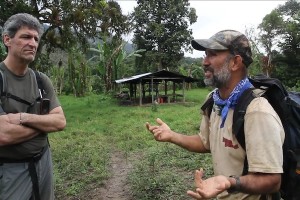A UNESCO WORLD HERITAGE SITE, Río Plátano, on the Mosquito Coast of Honduras, has the highest level of tropical biodiversity in Central America. It is also home to the Pech and Miskito Indians.
Over the last decade, poachers and non-Indians have been invading the reserve from all sides, burning forests to sow pastures, using dynamite to fish, and forcing indigenous inhabitants off their land.

